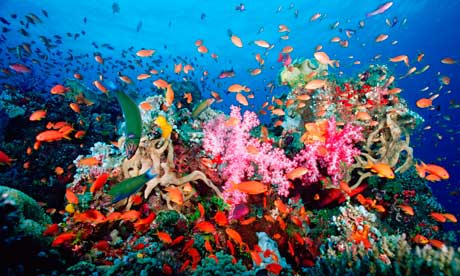 Canadian officials have acknowledged the country used Agent Orange to clear roadside brush as late as the 1980s. Provincial Transportation Minister Kathleen Wynne promised an inquiry after the Toronto Star revealed use of the Vietnam War-era defoliant.
Canadian officials have acknowledged the country used Agent Orange to clear roadside brush as late as the 1980s. Provincial Transportation Minister Kathleen Wynne promised an inquiry after the Toronto Star revealed use of the Vietnam War-era defoliant.
The chemical was used by the US military to strip Vietnam's jungles. Vietnam says Agent Orange is responsible for massively high instances of genetic defects in areas that were sprayed.
Agent Orange 'used to clear Canadian roads until 1980s'
No seeds, no independent research
 Soybeans, corn, cotton and canola -- most of the acres planted in these crops in the United States are genetically altered. "Transgenic" seeds reduce the use of some insecticides. But herbicide use is higher, and respected experts argue that some genetically engineered crops may also pose serious health and environmental risks. The benefits of genetically engineered crops may be overstated.
Soybeans, corn, cotton and canola -- most of the acres planted in these crops in the United States are genetically altered. "Transgenic" seeds reduce the use of some insecticides. But herbicide use is higher, and respected experts argue that some genetically engineered crops may also pose serious health and environmental risks. The benefits of genetically engineered crops may be overstated.
EPA revises pollution controls for boilers and incinerators

The Environmental Protection Agency on Wednesday said new pollution controls for boilers and incinerators will save thousands of lives every year but at half the cost of an earlier proposal that industry and lawmakers had strongly criticized.
EPA was under pressure from industries and members of Congress to revise the earlier proposal. McCarthy said information the agency collected during a comment period led to major changes.
How can polar bears be saved, court asks?
 A central question about the Endangered Species Act was behind the legal wrangling Wednesday in a federal courtroom: What, if anything, can be done to save polar bears as the earth warms and sea ice recedes?
A central question about the Endangered Species Act was behind the legal wrangling Wednesday in a federal courtroom: What, if anything, can be done to save polar bears as the earth warms and sea ice recedes?
Courts have done plenty in the past to protect endangered or threatened species, including putting a halt to logging or construction, noted U.S. District Judge Emmet Sullivan. But, he asked, what should be done when the primary threat to polar bears is the loss of their sea ice habitat?
Three-quarters of world's coral reefs in danger of dying
 Three-quarters of the world's coral reefs are at risk from overfishing, pollution and climate change, according to a report.
Three-quarters of the world's coral reefs are at risk from overfishing, pollution and climate change, according to a report.
By 2050 virtually all of the world's coral reefs – from the waters of the Indian Ocean to the Caribbean to Australia – will be in danger, the report warns. The consequences – especially for countries such as the Philippines or Haiti which depend on the reefs for food – will be severe.
Greenhouse gases led to increase in extreme rain

In a second Nature paper, another group reported that human greenhouse gas emissions likely contributed to the horrendous floods that inundated England and Wales in the fall of 2000. Those scientists ran sophisticated climate simulations across a network of tens of thousands of home computers that volunteers loaded with climate-modeling software.
Sea Shepherd Activists Prompt Japan To Suspend Whaling
 Japan has temporarily suspended its annual Antarctic whaling after repeated harassment by a conservationist group, a government official said Wednesday. Sea Shepherd Conservation Society ships have been chasing the Japanese whaling fleet for weeks in the icy seas off Antarctica, trying to block Japan's annual whale hunt, planned for up to 945 whales.
Japan has temporarily suspended its annual Antarctic whaling after repeated harassment by a conservationist group, a government official said Wednesday. Sea Shepherd Conservation Society ships have been chasing the Japanese whaling fleet for weeks in the icy seas off Antarctica, trying to block Japan's annual whale hunt, planned for up to 945 whales.
Japan has halted the hunt since Feb. 10 after persistent "violent" disruptions by the anti-whaling protesters, said fisheries agency official Tatsuya Nakaoku.
More Articles...
Page 144 of 200

 Environmental Glance
Environmental Glance






























